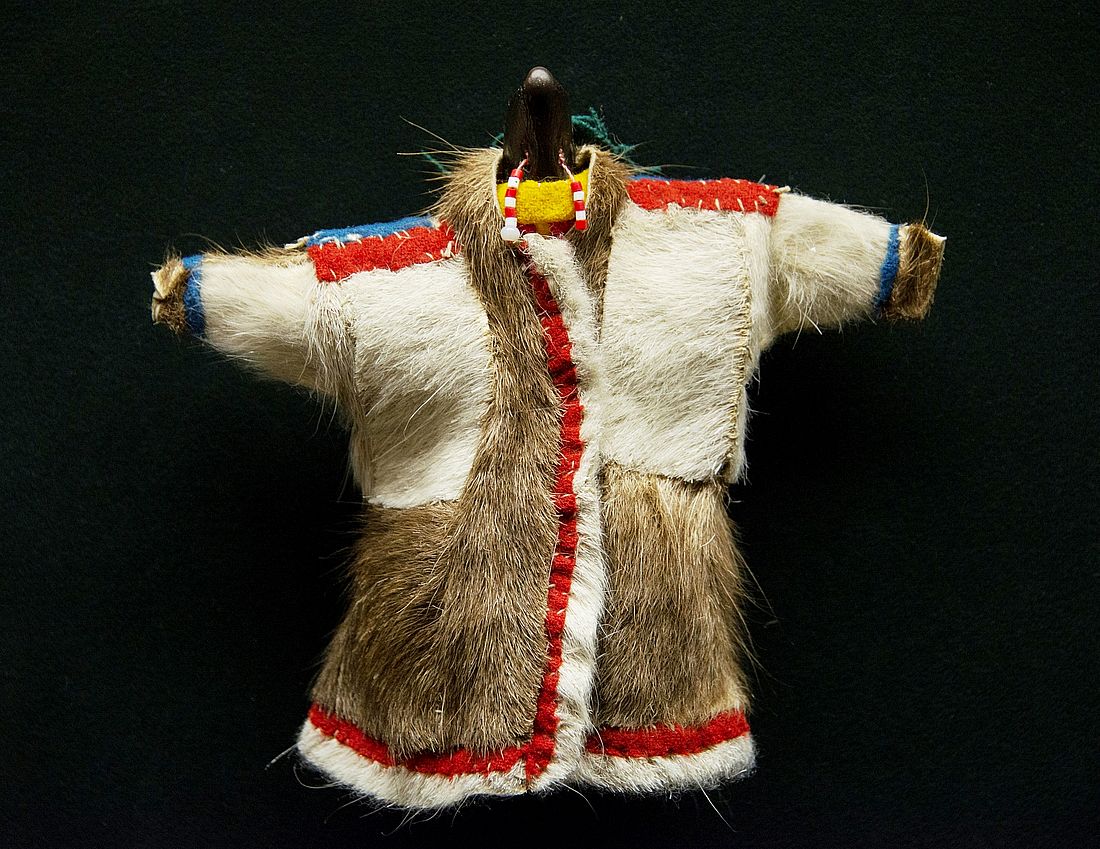In addition to the author’s poetry and prose in Russian and Nenets languages, processing of fairy tales and legends collected from fellow countrymen, the first writer from the Taimyr Nenets left a collection of Nenets children’s toys to the museum.
Woman in a Winter Parka was made in 1982 by Tamara Yamkina. According to the Nenets tradition, the doll’s head is a duck’s beak, to which ornaments made of green wool and beads and beaded earrings were sewn on the back. A parka of dark and light deer fur, decorated with stripes of blue and red cloth, is worn over it. Its cut is an exact copy of the Nenets women’s parka.
Nenets dolls (nuhuko), as a rule, are 10-15 centimeters in size, differ in gender. A duck beak is attached to the body of a doll-woman, and a doll-man gets a goose beak and is dressed in a reduced model of men’s clothing.
Usually the girls themselves sewed dolls from scraps of colored cloth and pieces of reindeer fur. The Nenets were taught sewing and general economic affairs from an early age. Deer bones and wood were used as materials for children’s toys. It is interesting that the Nenets gave names to children at the age of five. It was a childish name that a boy or girl was called until the age of 15. Only after that children receive their real names. Parents also composed personal songs for their children, in which they expressed what they would like to see them. Lyubov Nenyang recorded many personal songs of her fellow countrymen, preserving them for history and literature.
The collection of toys made by Nenyang for the funds of the Taimyr Museum of Local Lore is dated 1991. By that time, Lyubov Prokopyevna was already a member of the Writers Union of the USSR, one of the first to receive the official title of honorary citizen of Taimyr and the unofficial one – a great storyteller.
The first edition of her book – I Read Traces – was published in 1980. A year later, the Fiery Judgment poem by Nenyang was translated from the Nenets by the famous Krasnoyarsk poet Zory Yakhnin. Stories, poems, including the ones for children, fairy tales, legends, recorded in the tundra, were published not only during Lyubov Nenyang’s life, but also after her death. She ‘went to pick up cloudberries’ as the Nenets say, in 1996 in the prime of her fame and creativity.
Text: Valentina Vachaeva, Photo: Taimyr Museum of Local Lore






